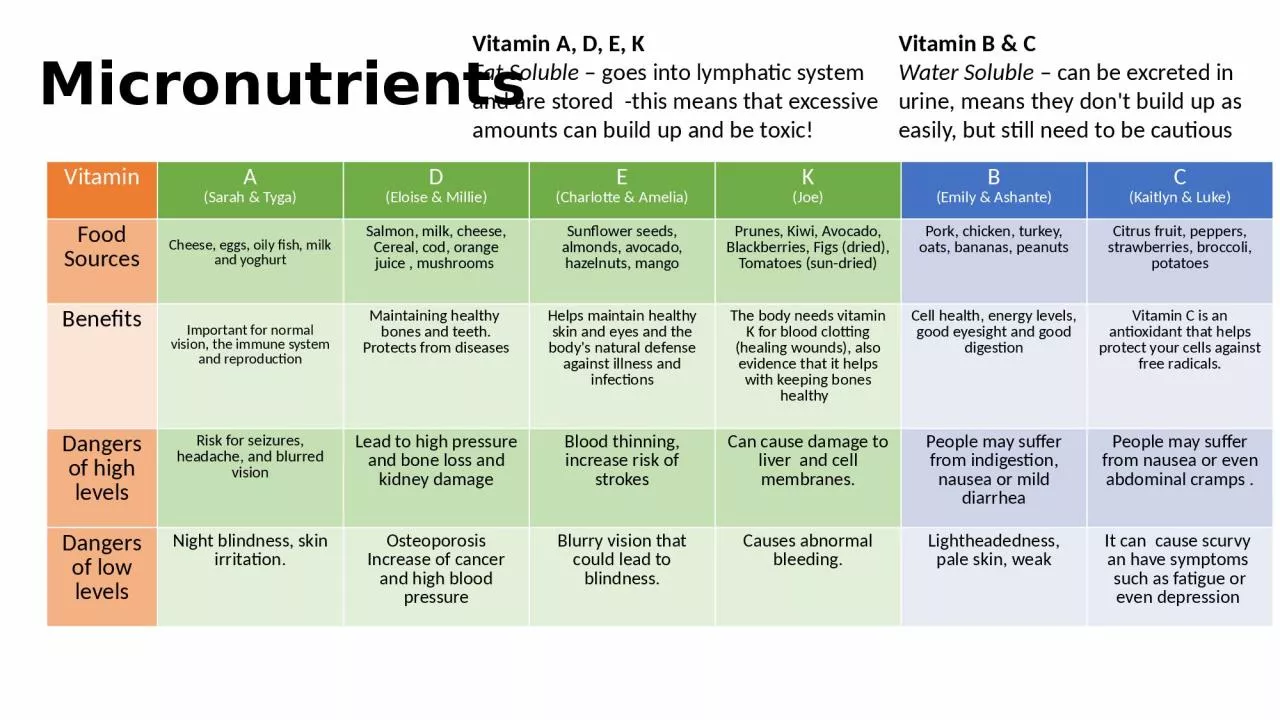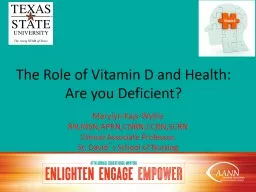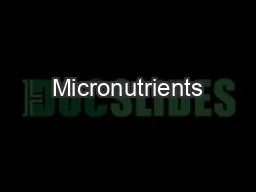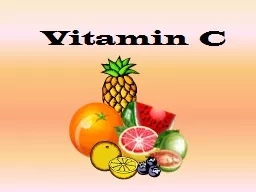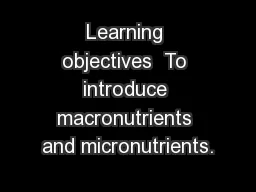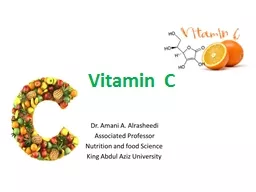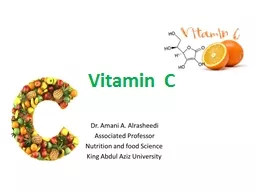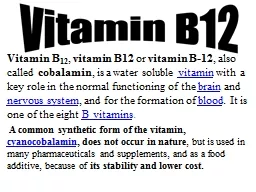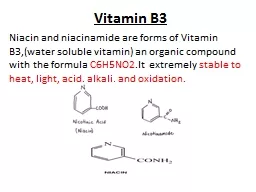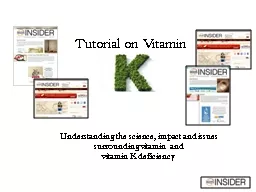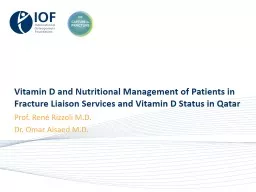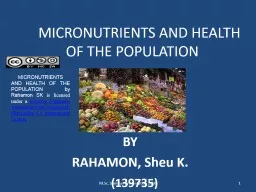PPT-Micronutrients Vitamin A, D, E, K
Author : Honeybunches | Published Date : 2022-08-01
Fat Soluble goes into lymphatic system and are stored this means that excessive amounts can build up and be toxic Vitamin B amp C Water Soluble can be excreted
Presentation Embed Code
Download Presentation
Download Presentation The PPT/PDF document "Micronutrients Vitamin A, D, E, K" is the property of its rightful owner. Permission is granted to download and print the materials on this website for personal, non-commercial use only, and to display it on your personal computer provided you do not modify the materials and that you retain all copyright notices contained in the materials. By downloading content from our website, you accept the terms of this agreement.
Micronutrients Vitamin A, D, E, K: Transcript
Download Rules Of Document
"Micronutrients Vitamin A, D, E, K"The content belongs to its owner. You may download and print it for personal use, without modification, and keep all copyright notices. By downloading, you agree to these terms.
Related Documents

